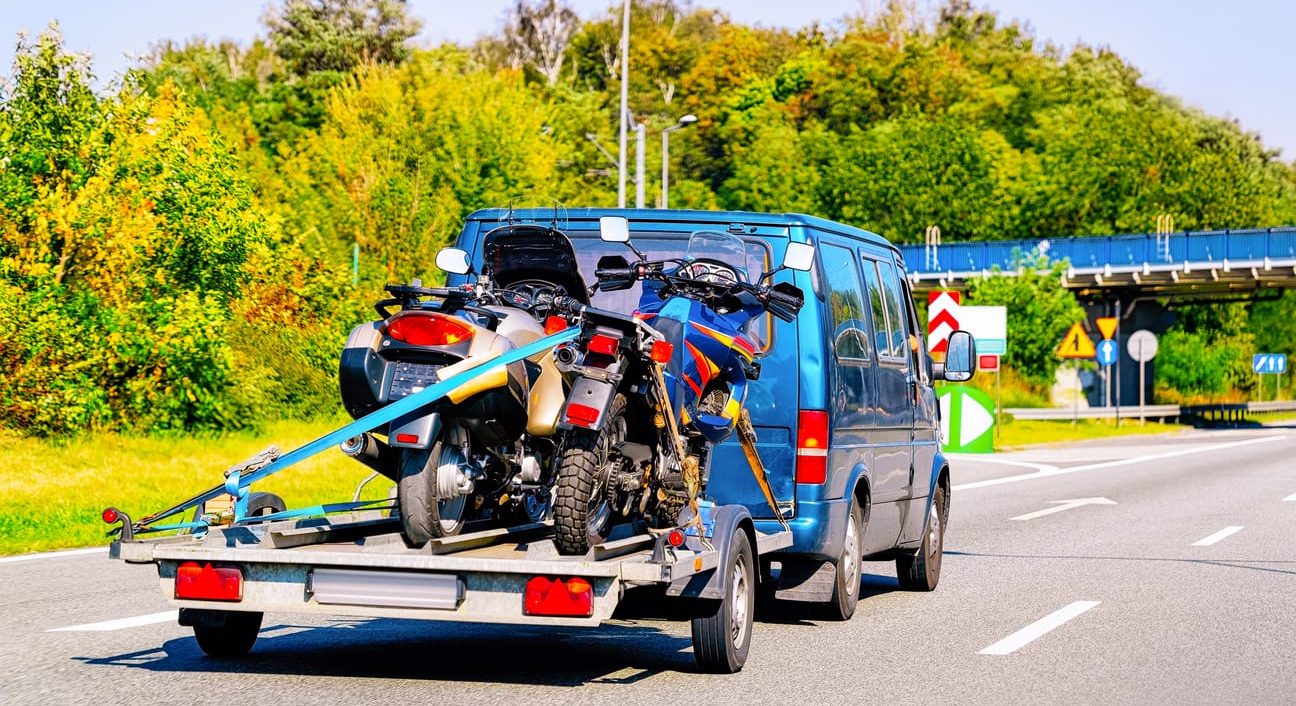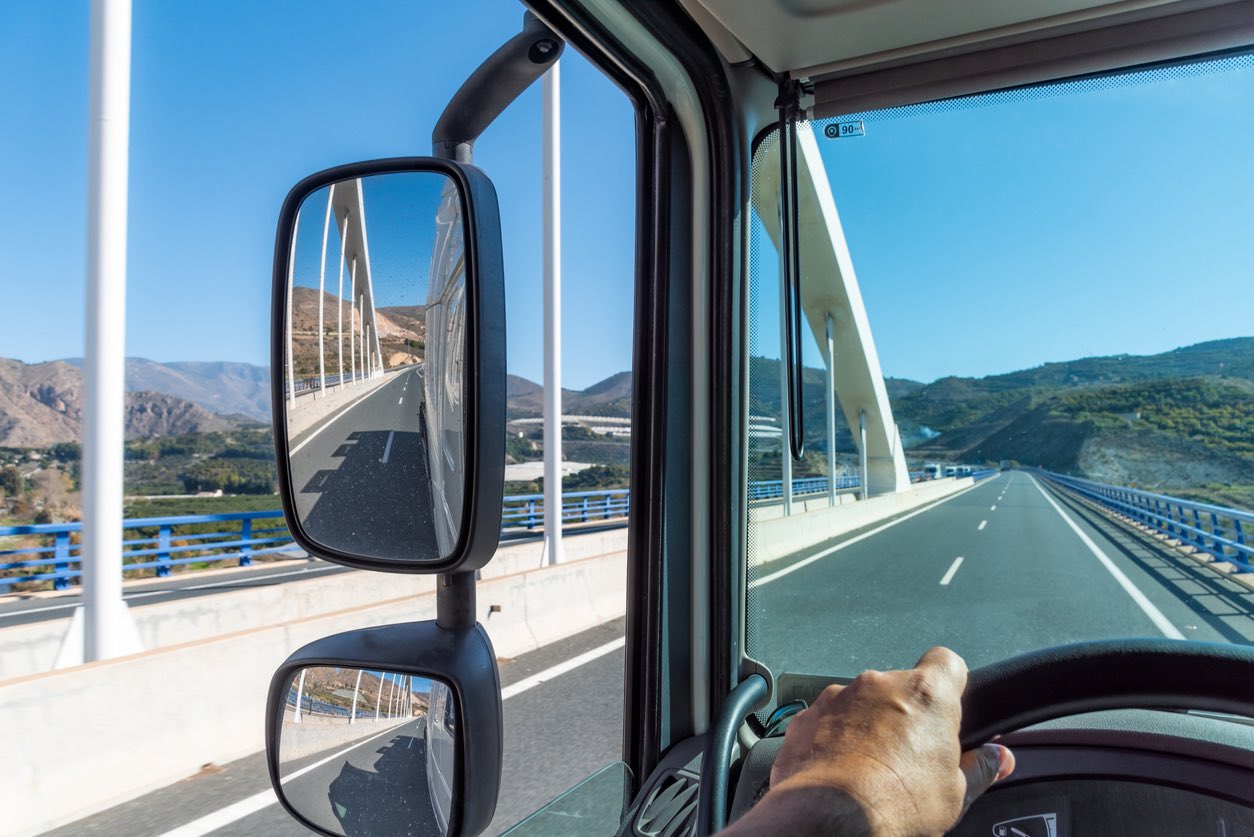Picture yourself cruising down an open road, the wind in your hair and the rumble of a powerful engine beneath you. Motorcycles have a way of capturing our hearts, evoking a sense of freedom, adventure, and pure exhilaration. Whether you’re a seasoned rider or a passionate enthusiast, the bond between you and your motorcycle is something truly special.
But what happens when you need to transport your beloved bike across long distances? Maybe you’re relocating to a new city, attending a motorcycle rally, or even selling your motorcycle to a buyer in a different state. This is where the need for reliable motorcycle shipping services comes into play.
While the thought of parting ways with your motorcycle, even temporarily, may tug at your heartstrings, fear not! With the right knowledge and preparation, you can ensure a smooth and stress-free motorcycle shipping experience. In this article, we will provide you with expert tips and guidance, helping you navigate the intricacies of motorcycle transport.
So, whether you’re seeking advice on packing your motorcycle securely, understanding shipping costs, or choosing the right shipping method, we’ve got you covered. Get ready to embark on a journey where we unlock the secrets to mastering motorcycle shipping, ensuring your prized possession arrives at its destination safely and in pristine condition. Let’s dive in.
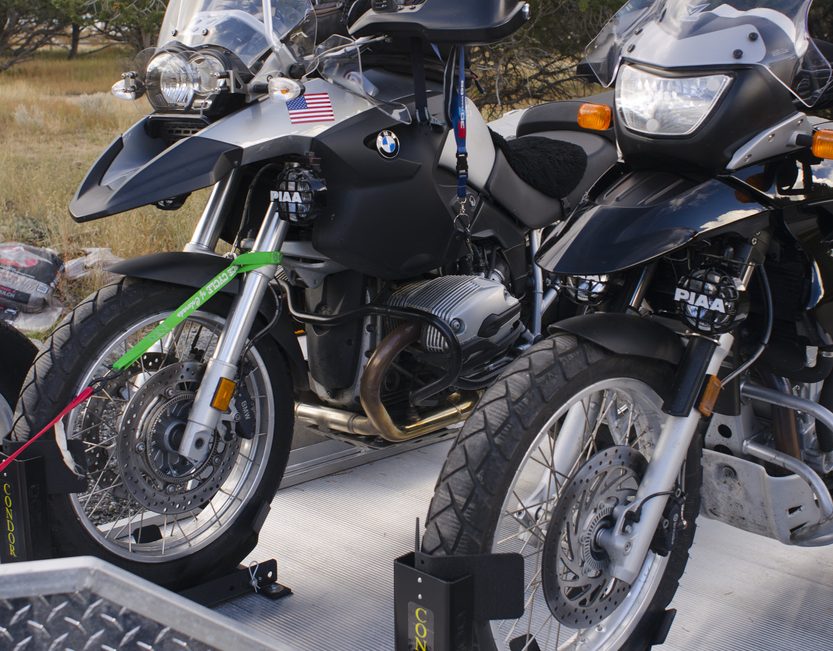
As you embark on your motorcycle shipping journey, one of the most crucial steps is selecting a reliable and trustworthy shipping company. After all, you want your two-wheeled companion to be in safe hands throughout its voyage. To ensure a smooth and worry-free experience, here are some essential tips to guide you in choosing the right motorcycle shipping company.
First and foremost, take the time to explore and compare different shipping companies in your area or those that offer services to your desired destination. Look for companies with a solid reputation and a track record of delivering motorcycles safely and on time.
A reputable motorcycle shipping company should hold all the necessary licenses and certifications required by the relevant authorities. This ensures that they comply with industry standards and regulations. Additionally, verify that the company has comprehensive insurance coverage to protect your motorcycle in case of any unforeseen circumstances during transit.
Testimonials can provide valuable insights into the experiences of previous clients. Look for feedback regarding the company’s professionalism, communication, and overall satisfaction. Positive reviews and recommendations from fellow motorcycle enthusiasts can go a long way in instilling confidence and peace of mind.
Don’t hesitate to reach out and ask questions. Contact the shipping companies you’re considering and inquire about their processes, handling procedures, and any specific concerns you may have. A reliable company will be responsive, transparent, and happy to address your queries, demonstrating their commitment to customer satisfaction.
Consider Obtaining Quotes from Multiple Shipping Companies
While price shouldn’t be the sole determining factor, it’s important to have a clear understanding of the costs involved. Beware of unusually low prices, as they may indicate subpar services or hidden fees. Compare the quotes, taking into account the company’s reputation, level of expertise, and the services they offer.
Conducting thorough research, checking for licensing and insurance, and gathering insights from customer reviews, you’ll be equipped with the necessary knowledge to choose a reliable motorcycle shipping company. With the right partner by your side, you can set off on your shipping journey with confidence, knowing that your beloved motorcycle is in capable hands.

When it comes to motorcycle shipping, understanding the factors that influence the costs involved is crucial for budgeting and planning purposes. Several key factors can affect the overall price of shipping your motorcycle. Here are some of the main considerations:
1. Distance: The distance between the pickup location and the destination plays a significant role in determining the shipping costs. Longer distances generally result in higher shipping fees due to fuel expenses, driver accommodations, and other logistical factors.
2. Shipping Method: The choice between open transport and enclosed transport will impact the shipping costs. Open transport, where your motorcycle is exposed to the elements, tends to be more affordable compared to enclosed transport, which provides additional protection but comes at a higher price.
3. Motorcycle Size and Weight: The dimensions and weight of your motorcycle can influence the shipping costs. Larger and heavier bikes may require specialized handling equipment or may take up more space on the transport carrier, leading to higher fees.
4. Additional Services: If you require extra services such as crating, packing, or expedited shipping, these can add to the overall costs. It’s important to clarify with the shipping company what services are included in the quote and whether there are any additional charges.
5. Season and Demand: Shipping costs can vary based on seasonal fluctuations and market demand. During peak seasons or busy periods, such as holidays or motorcycle events, prices may be higher due to increased demand for shipping services.
To obtain accurate cost estimates for shipping your motorcycle, consider the following steps:
1. Gather Information: Provide detailed information about your motorcycle, including its make, model, dimensions, and weight. The more accurate the information you provide, the more precise the cost estimate will be.
2. Research Multiple Shipping Companies: Reach out to multiple reputable shipping companies and request quotes. Ensure that you provide consistent information to each company to make a fair comparison.
3. Inquire about Additional Fees: Ask about any potential additional fees or surcharges that may apply. This could include services like insurance coverage, crating, storage, or special handling requirements.
4. Understand the Terms and Conditions: Carefully review the terms and conditions provided by each shipping company. Look for any hidden fees or clauses that may affect the final cost.
5. Seek Clarification: If anything is unclear or if you have specific concerns, don’t hesitate to ask questions. A reliable shipping company will be transparent and willing to provide the necessary information to help you make an informed decision.
Considering the factors that influence shipping costs and obtaining accurate estimates, you’ll be better equipped to plan your budget and choose a shipping option that aligns with your needs. Remember to prioritize the safety and security of your motorcycle, as the peace of mind that comes with a reputable shipping service is priceless.

Before entrusting your motorcycle to the shipping company, it’s essential to give it a thorough cleaning and inspection. Taking these steps will not only help protect your bike during transit but also ensure a smooth shipping experience. Here’s what you need to do:
1. Wash your motorcycle: Start by giving your motorcycle a proper wash. Use mild soap and water to clean the exterior, removing any dirt, grime, or road debris. Pay special attention to hard-to-reach areas, such as under the fenders or in between the engine components.
2. Dry it thoroughly: After washing, make sure to dry your motorcycle completely. Water residue can lead to corrosion, so use a soft cloth or microfiber towel to dry all surfaces, including the nooks and crannies.
3. Wax or polish (optional): Applying a protective wax or polish is an extra step you can take to safeguard your motorcycle’s paint and finish. It adds a layer of protection against minor scratches and helps maintain its shine during transit.
4. Document pre-existing damage: Before shipping, thoroughly inspect your motorcycle for any pre-existing damage. Take close-up photographs or videos of your bike from different angles, capturing any existing scratches, dents, or other imperfections. This documentation will serve as evidence in case any new damage occurs during transit.
To ensure the safe transport of your motorcycle, it’s important to remove any accessories and secure loose parts. By taking these precautions, you minimize the risk of damage during transit. Here’s what you should do:
1. Remove personal items: Empty all storage compartments and remove any personal belongings from your motorcycle. This includes saddlebags, top cases, tank bags, or any other attached storage accessories. Shipping companies typically require motorcycles to be free of personal items for safety and liability reasons.
2. Secure loose parts: Inspect your motorcycle for any loose or detachable parts. Items such as mirrors, antennas, or windscreens should be securely fastened or removed and packed separately. Use appropriate padding or bubble wrap to protect these parts and prevent them from shifting during transit.
3. Fold-in mirrors and retract antennas: If your motorcycle has foldable mirrors or retractable antennas, make sure to fold them in or retract them. This will reduce the risk of them being damaged or causing damage to other motorcycles or vehicles during transport.
4. Disable alarm systems: If your motorcycle has an alarm system or any anti-theft devices, it’s important to disable them before shipping. This prevents unnecessary alarms from being triggered during transit and avoids draining the battery.
Taking the time to clean and inspect your motorcycle, as well as removing accessories and securing loose parts, will go a long way in ensuring a smooth and damage-free shipping experience. Following these steps, you can have peace of mind knowing that your beloved bike will be well-prepared for its journey to the destination.
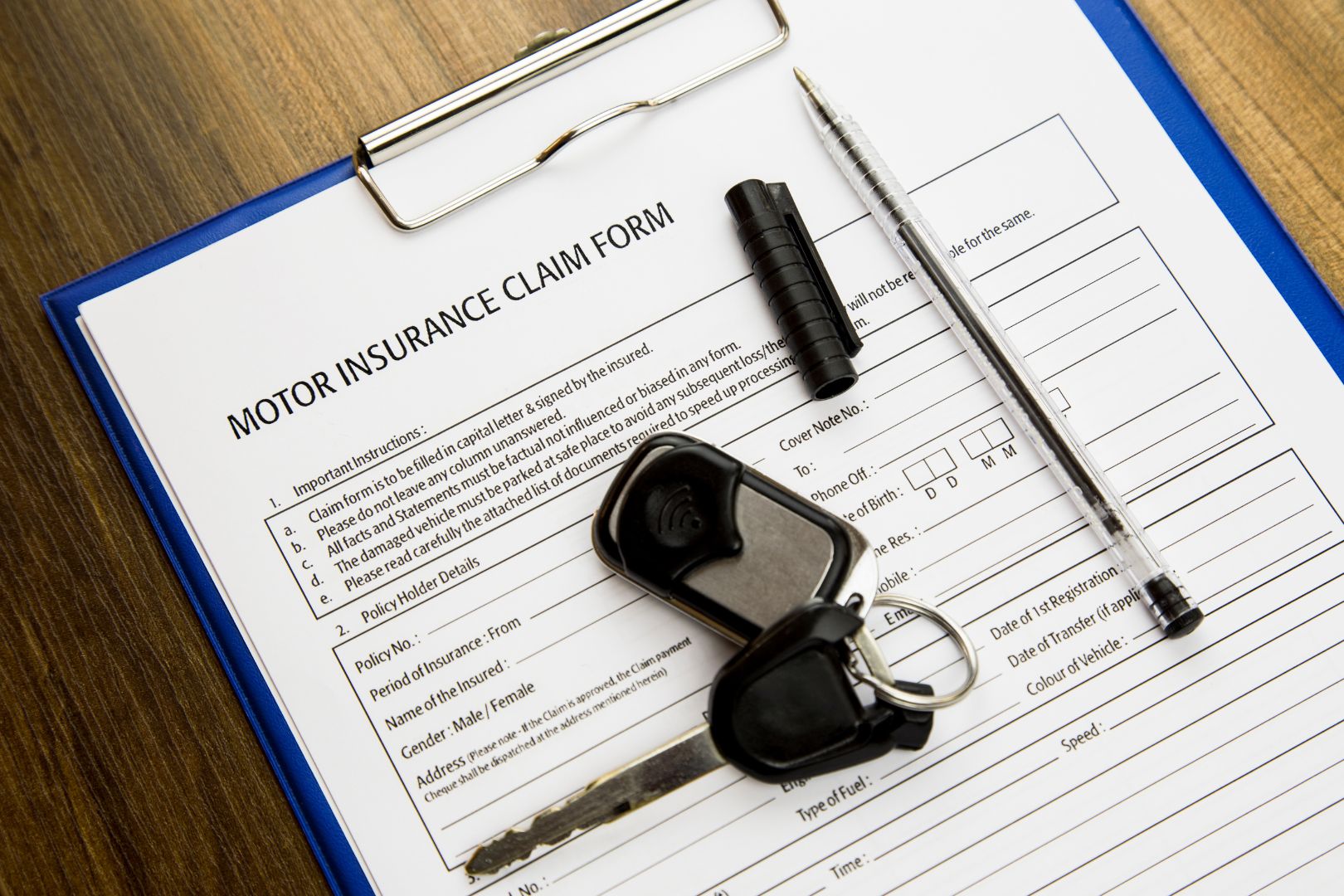
When it comes to shipping your motorcycle, gathering the necessary paperwork is not just a requirement but a crucial step in ensuring a smooth and worry-free process. By being well-prepared and organized, you can avoid unnecessary delays and potential complications. Here are the essential documents you’ll need:
1. Proof of Ownership: To establish your ownership of the motorcycle, you’ll need to provide clear and valid proof of ownership. This is typically in the form of the vehicle’s title or certificate of origin. Ensure that the document is in your name and up to date. If you’re still paying off a loan, you may need additional documentation, so check with the lienholder for any specific requirements. Not necessary for motorcycle transport throughout the US.
2. Registration and Insurance: It’s important to have copies of your motorcycle’s registration documents and insurance policy. These documents confirm that your motorcycle is legally registered and adequately insured. Keep the originals in a safe place and provide copies to the shipping company as required. Not necessary for motorcycle transport throughout the US.
3. Photo ID: Prepare a copy of your valid photo identification, such as a driver’s license or passport. This serves as proof of your identity and may be required by the shipping company to ensure compliance with regulations. Not necessary for motorcycle transport throughout the US.
4. Special Permits or Documents: Depending on the destination or the route your motorcycle will be travelling, you may need to obtain special permits or documents. Research the specific requirements for the states or countries involved and ensure you have the necessary paperwork in order.
While reputable motorcycle shipping companies take great care in handling your vehicle, accidents or unforeseen circumstances can still occur. Therefore, considering additional insurance options can provide you with an extra layer of protection and peace of mind. Here are some factors to consider when evaluating insurance options:
1. Check the shipping company’s insurance coverage: Start by inquiring about the insurance coverage provided by the shipping company. Understand the extent of their liability and what damages or losses they will be responsible for in case of an incident. Clarify any limitations or exclusions to ensure you have a clear understanding.
2. Research third-party insurance providers: Take the time to research and explore the possibility of obtaining additional insurance coverage through a third-party provider. These specialized insurance options are tailored specifically for motorcycle shipping and may offer more comprehensive coverage. Look for reputable providers, compare coverage options, and read reviews to ensure reliability.
3. Understand coverage limits and deductibles: When evaluating insurance options, pay attention to the coverage limits and deductibles associated with each policy. Ensure that the coverage adequately protects the value of your motorcycle and that you are comfortable with any potential out-of-pocket expenses in the event of a claim.
4. Document the motorcycle’s condition: Before shipping your motorcycle, document its condition with detailed photographs or videos. This evidence will be valuable in the event of a claim and can help substantiate any damage that may occur during transit. Take close-ups of any existing scratches, dents, or other imperfections to establish a clear record.
5. Read and understand the insurance policy: Before finalizing any insurance coverage, thoroughly review the terms and conditions of the policy. Understand the coverage details, exclusions, and the process for filing a claim. If you have any questions or concerns, don’t hesitate to reach out to the insurance provider for clarification.
By gathering the necessary paperwork and evaluating insurance options, you demonstrate a responsible and proactive approach to motorcycle shipping.
With a well-documented and insured motorcycle, you can have peace of mind knowing that you’ve taken every precaution for a smooth and worry-free shipping experience.

Ensuring that your motorcycle is properly secured and protected within its packaging is crucial for a successful shipping experience. By taking the time to secure and protect your bike, you can minimize the risk of damage caused by movement or external factors. Here are some steps to follow:
1. Secure the Motorcycle: Place your motorcycle securely within the crate or box, ensuring it is centred and balanced. Use straps and tie-downs to secure the bike to the designated anchor points in the packaging. Avoid over-tightening to prevent unnecessary pressure on the motorcycle.
2. Protect Fragile Parts: Identify any delicate or vulnerable parts of your motorcycle, such as mirrors, handlebars, or fairings. Apply extra padding or protective covers to shield these areas from potential impacts.
3. Drain Fluids: Before shipping, it’s crucial to drain the fuel tank and any other fluids, such as oil or coolant. This step is essential for safety reasons and to prevent leaks during transportation.
4. Disconnect the Battery: Disconnect the motorcycle’s battery to prevent any potential electrical issues or drain during transit. This simple step can help preserve the battery’s lifespan and ensure the bike arrives in optimal condition.
5. Lock and Secure: If your motorcycle has a locking mechanism, make sure to engage it before shipping. This provides an extra layer of security against unauthorized access.
6. Follow Manufacturer Guidelines: Refer to the motorcycle’s owner’s manual for any specific packaging and crating instructions provided by the manufacturer. Adhering to these guidelines can help maintain the warranty and protect the bike during shipping.
When it comes to shipping your motorcycle, timing is key. By strategically scheduling your shipment, you can ensure convenience and minimize any potential disruptions to your plans. Consider the following factors when determining the ideal timing for your motorcycle shipment:
1. Availability: Check the availability of the shipping company and their schedule. It’s important to book your shipment in advance to secure a spot during your preferred timeframe. Popular shipping seasons or peak periods may have limited availability, so plan accordingly.
2. Weather Conditions: Take into account the weather conditions at both the pickup and delivery locations. Inclement weather, such as heavy rain or snowstorms, can affect transportation and potentially cause delays. Consider the climate and choose a time when the weather is relatively stable to minimize any weather-related risks.
3. Personal Commitments: Consider your commitments and obligations when scheduling the shipment. Ensure that the timing aligns with your availability and allows you to be present for both the pickup and delivery of your motorcycle. This way, you can oversee the process and address any concerns in real time.

Once you’ve determined the ideal timing for your motorcycle shipment, it’s time to make the necessary arrangements with the shipping company. Effective communication and clear agreements are essential for a smooth and hassle-free experience. Follow these steps to ensure a seamless process:
1. Research and Select a Reliable Shipping Company: Conduct thorough research to identify reputable and experienced motorcycle shipping companies. Look for reviews, testimonials, and certifications to gauge their credibility. Compare prices, services, and customer feedback to make an informed choice.
2. Request a Quote: Reach out to the shipping company and provide them with relevant details such as the pickup and delivery locations, desired timing, and any specific requirements. Request a detailed quote that outlines the costs involved, including any additional services or insurance options.
3. Discuss Shipping Options: Engage in a conversation with the shipping company to discuss available shipping options. Consider factors such as open transport (exposing the motorcycle to the elements) or enclosed transport (providing additional protection from weather and road debris). Assess the pros and cons of each option and choose the one that aligns with your preferences and budget.
4. Confirm Services and Terms: Once you’ve decided on the shipping company and chosen the preferred services, review and confirm the terms of the agreement. Pay attention to details such as pickup and delivery procedures, estimated transit time, insurance coverage, and any additional fees or charges. Seek clarification on any aspects that are unclear or require further explanation.
5. Documentation and Contracts: Ensure that all necessary paperwork, including contracts and agreements, is in place. Carefully read through the documents and ask questions if anything is unclear. Keep copies of all relevant paperwork for your records.
To ensure a smooth motorcycle shipping experience, it is essential to thoughtfully schedule your shipment and establish thorough arrangements with the shipping company. This approach allows you to streamline the process and mitigate any potential obstacles that may arise. Effective communication, meticulous attention to detail, and establishing clear agreements play pivotal role in achieving success when shipping your motorcycle.

When it comes to shipping your motorcycle, selecting the appropriate shipping method is crucial to ensure its safety and security throughout the journey. Two common options to consider are open transport and enclosed transport. Let’s explore the pros and cons of each and guide you in making an informed decision that aligns with your specific needs.
Open transport involves transporting your motorcycle on an open carrier, exposed to the elements and potential road debris. On the other hand, enclosed transport provides a higher level of protection by shipping your bike in an enclosed trailer or container. Here’s a closer look at the advantages and disadvantages of each method:
1. Cost-Effective: Open transport is generally more affordable than enclosed transport, making it a popular choice for many motorcycle owners.
2. Availability: Since open carriers are more common, they offer greater availability and more flexible scheduling options.
1. Exposure to Elements: Your motorcycle will be exposed to weather conditions such as rain, snow, and sunlight. This may lead to potential cosmetic damage, such as fading or minor scratches.
2. Road Debris: The open nature of the carrier means that your motorcycle may be susceptible to road debris, such as rocks or dust, which could cause minor dings or scratches.
1. Enhanced Protection: With an enclosed trailer or container, your motorcycle is shielded from the elements, including adverse weather conditions and potential road debris.
2. Added Security: Enclosed transport provides an extra layer of security and privacy, reducing the risk of theft or vandalism.
1. Higher Cost: Due to the increased level of protection, enclosed transport tends to be more expensive than open transport.
2. Limited Availability: Enclosed carriers are less common than open carriers, which means they may have limited availability and potentially longer waiting periods.
To determine the most suitable shipping method for your motorcycle, consider your specific needs and priorities. Evaluate factors such as your budget, the value of your bike, the distance of the shipment, and the level of protection you desire. Additionally, it’s essential to research and chooses a reputable shipping company that offers the specific services you require.
At Ship A Car, Inc., we understand the importance of a smooth and reliable motorcycle shipping experience. Our Smooth service is designed to cater to your needs, providing secure and efficient transportation for your motorcycle. Visit our website to learn more about our services and how we can assist you in shipping your motorcycle with care and professionalism.
Carefully weighing the pros and cons of open transport and enclosed transport, and utilizing our Smooth service at Ship A Car, you can make a well-informed decision and ensure a seamless shipping experience for your cherished motorcycle.
Ensure transparency and peace of mind throughout your motorcycle shipping experience by prioritizing tracking and communication. Stay connected with the shipping company through advanced tracking technology, receiving real-time updates on the location and status of your motorcycle.
Maintain open lines of communication with dedicated customer service representatives who can address your queries and provide timely assistance. By establishing effective tracking and communication channels, you can have peace of mind knowing the progress of your shipment and address any concerns promptly.
Once your motorcycle arrives at its destination, it is essential to dedicate time to receiving and inspecting it thoroughly. This step ensures that any issues or concerns are promptly addressed, guaranteeing the quality and condition of your prized possession.
As the shipping company delivers your motorcycle, take the time to carefully inspect it from all angles. Look for any visible damage or signs of mishandling during the transportation process. Pay attention to areas such as the bodywork, handlebars, mirrors, lights, and exhaust system. Check for any scratches, dents, or other forms of damage that may have occurred during transit.
Inspect the tires to ensure they are properly inflated and in good condition. Examine the brakes, suspension, and other mechanical components to verify their functionality. It is also crucial to check the fuel levels and ensure that no leaks or spills have occurred during the shipment.
If you notice any damage or have concerns about the condition of your motorcycle, it is important to address them promptly. Contact the shipping company immediately to report any issues and document them with photographs or videos as evidence.
A reputable shipping company will have a protocol in place for handling such situations. They should guide you through the necessary steps to file a claim and seek appropriate compensation for any damages incurred. Promptly reporting any concerns allows for a smoother resolution process and ensures that you receive the necessary support.
Remember, it is crucial to act quickly to preserve your rights and protect your investment. Failure to report damages or address concerns promptly may complicate the claims process and make it more challenging to seek resolution.
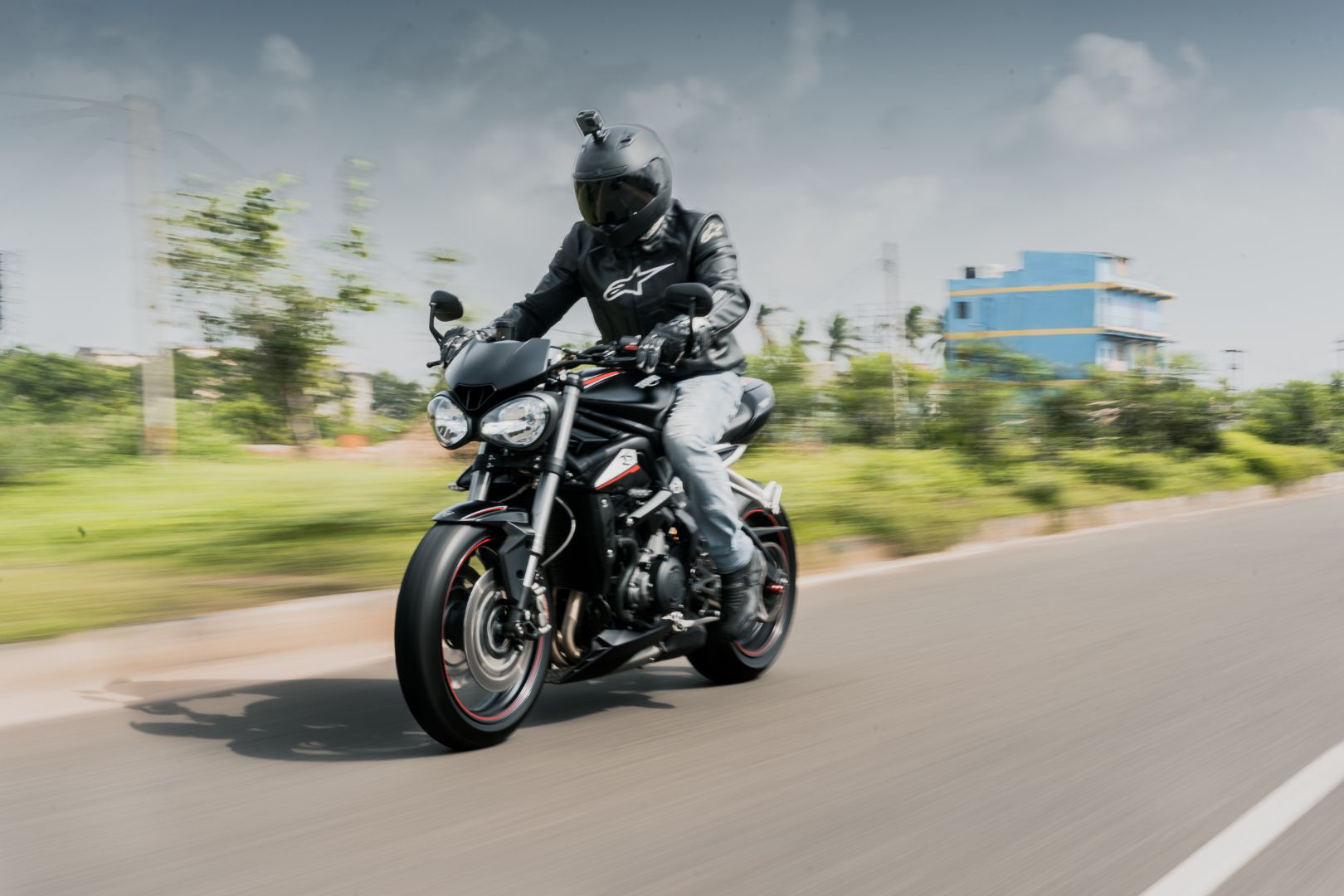
As you set your sights on the vast horizons of international motorcycle shipping, it’s essential to embark on this adventure armed with knowledge and a sense of wanderlust. Let’s explore two crucial aspects that will guide you through the complex world of global shipping:
1. Unravel the Mystery: Begin your journey by immersing yourself in the intricate realm of import/export regulations. Delve into the specific requirements of your chosen destination, understanding the road rules that govern the transportation of motorcycles across borders.
2. Master the Terrain: Each country has its unique set of regulations and permits to ensure a smooth entry for your beloved two-wheeled companion. Take the time to unravel these requirements, acquiring the necessary knowledge to navigate through the customs and import processes seamlessly.
1. Documentation Expedition: Equip yourself with the essential paperwork needed for a successful international motorcycle shipment. Familiarize yourself with documents such as the bill of lading, vehicle title, and proof of ownership, ensuring you have all the necessary paperwork at your fingertips.
2. Customs Crossing: Step confidently into the realm of customs clearance by understanding the specific customs and documentation requirements of both the exporting and importing countries. This knowledge will help you prepare and present the required documents, ensuring a smooth passage through the customs checkpoint.
Ignite your adventurous spirit, gather the knowledge, and set forth on your international motorcycle shipping odyssey, knowing that you’ve taken the necessary steps to ensure a successful and memorable trip. Bon voyage!

As you embark on the enchanting voyage of shipping your cherished vintage or classic motorcycle, let us embark on a poetic odyssey, where every twist and turn brings us closer to preserving the essence of these timeless machines.
1. Delicate Strokes: Your vintage or classic motorcycle is a work of art, a masterpiece that deserves extra care and attention. Consider securing specialized packaging materials that offer enhanced protection against vibrations, shocks, and the elements. Wrap your prized possession in a tender embrace, shielding it from the ravages of time and transportation.
2. A Symphony of Maintenance: Prior to shipping, pay homage to the meticulous maintenance routine of your treasured two-wheeled companion. Bestow upon it the gift of a thorough inspection, ensuring that all components are in harmony and ready for the journey ahead. Preserve its authenticity and splendour, for it carries with it a history that spans generations.
1. Seek the Maestros: Entrust your vintage or classic motorcycle to the hands of specialized shipping companies that understand the unique needs of these remarkable machines. These artisans of transportation possess the knowledge and expertise to handle your prized possession with the utmost care and reverence.
2. A Symphony of Services: Embrace the symphony of services offered by these shipping virtuosos. From climate-controlled transport options that shield your motorcycle from the elements to personalized handling by trained professionals, these specialized companies orchestrate a symphony of logistics, ensuring a seamless and secure journey for your vintage or classic beauty.
Shipping a vintage or classic motorcycle is not merely a logistical endeavour; it is a homage to the timeless elegance and enduring legacy of these two-wheeled wonders. With special considerations and the guidance of specialized shipping companies, you can embark on a voyage that preserves the essence and heritage of your vintage masterpiece.
1. Research Reliable Shipping Companies: Begin by researching reputable motorcycle shipping companies that specialize in transporting motorcycles safely and securely.
2. Request Multiple Quotes: Obtain quotes from different shipping companies to compare prices, services, and delivery timelines. This will help you make an informed decision.
3. Check Licensing and Insurance: Ensure that the shipping company you choose is properly licensed and insured. This will give you peace of mind knowing that your motorcycle is protected throughout the shipping process.
4. Prepare Your Motorcycle: Clean your motorcycle thoroughly and inspect it for any pre-existing damages. Take clear photographs of your bike from different angles as a reference.
5. Remove Accessories and Secure Loose Parts: Remove any detachable accessories from your motorcycle and store them separately. Secure any loose parts to prevent damage during transit.
6. Gather Necessary Paperwork: Collect all the required documentation, such as the vehicle registration, title, and any additional paperwork needed for shipping internationally. Double-check the customs requirements for the destination country.
7. Evaluate Insurance Options: Consider purchasing additional insurance coverage for your motorcycle during transit. Check with the shipping company or your insurance provider to understand the available options.
8. Select Packaging Materials: Choose appropriate packaging materials to protect your motorcycle during transportation. This may include using sturdy crates, padding, and straps to secure the bike in place.
9. Schedule the Shipment: Coordinate with the shipping company to schedule the pickup date and provide them with the necessary information regarding the origin and destination of the shipment.
10. Track and Communicate: Stay in touch with the shipping company to track the progress of your motorcycle’s journey. Maintain open communication and address any concerns promptly.
11. Receive and Inspect: Upon delivery, thoroughly inspect your motorcycle for any damages or discrepancies. Refer to the photographs taken before shipping to compare the condition.
12. Address Issues Promptly: If you notice any damages or issues with your motorcycle, notify the shipping company immediately. Follow their instructions for filing a claim and resolving any concerns.

Embarking on a motorcycle shipping journey can feel overwhelming, but with the right guidance and support, it can be a stress-free experience. At Ship A Car, Inc., we are dedicated to providing you with top-notch service and ensuring the safe delivery of your motorcycle to its destination.
So, whether you’re relocating, selling your bike, or heading out on an exciting adventure, trust SAC to handle your motorcycle shipping needs. We are here to make the process as smooth as possible, giving you the peace of mind you deserve. Get ready to embark on a worry-free transport journey with Ship A Car. Safe travels, and we look forward to serving you soon.
Q: How do I choose a reliable motorcycle shipping company?
A: Choosing a reliable motorcycle shipping company requires thorough research. Look for companies with a strong track record, positive customer reviews, and a focus on safety and security. Obtain multiple quotes to compare services, prices, and delivery timelines, allowing you to make an informed decision.
Q: What preparations should I make before shipping my motorcycle?
A: Before shipping your motorcycle, it’s important to prepare it properly. Clean your bike thoroughly and inspect it for any pre-existing damages. Take detailed photographs from different angles as documentation. Remove any detachable accessories and secure loose parts to prevent damage during transit.
Q: What documents do I need for motorcycle shipping?
A: The required documents may vary depending on the destination and type of shipment. Generally, you will need the motorcycle’s title and registration, a valid ID, and any specific customs documentation for international shipping. Consult with the shipping company to ensure you have all the necessary paperwork in order.
Q: Is insurance necessary for shipping my motorcycle?
A: While insurance is not mandatory, it is highly recommended for added peace of mind. Accidents or damages can occur during transportation, and having insurance coverage helps protect your investment. Evaluate different insurance options and choose the coverage that best suits your needs.
Q: How should I package my motorcycle for shipping?
A: Proper packaging is crucial to ensure the safety of your motorcycle during transportation. Use suitable materials such as sturdy crates, padding, and straps to secure your bike. Follow the shipping company’s guidelines or seek professional assistance to ensure your motorcycle is packaged correctly.
Q: What should I do if there are issues or damages upon delivery?
A: Thoroughly inspect your motorcycle upon delivery and address any issues or damages promptly. Contact the shipping company immediately and provide them with detailed information about the problem. Follow their instructions on how to proceed and document any damages with photographs and written descriptions.
Q: How can I ensure a stress-free motorcycle shipping experience?
A: To ensure a stress-free motorcycle shipping experience, choose a reputable shipping company, prepare your bike properly, gather the necessary documentation, consider insurance coverage, communicate effectively with the shipping company, and inspect your motorcycle upon delivery. Following these tips will help you have a smoother and worry-free shipping experience.
Q: Can I ship my vintage or classic motorcycle safely?
A: Yes, shipping vintage or classic motorcycles safely is possible. Work with specialized shipping companies that have experience handling valuable and delicate motorcycles. These companies have the expertise and equipment to ensure the secure transportation of your vintage or classic bike.
